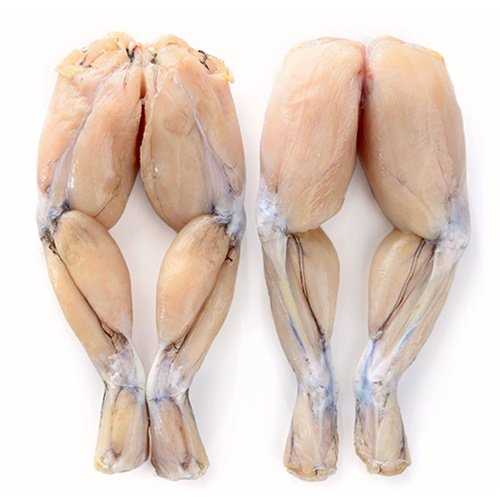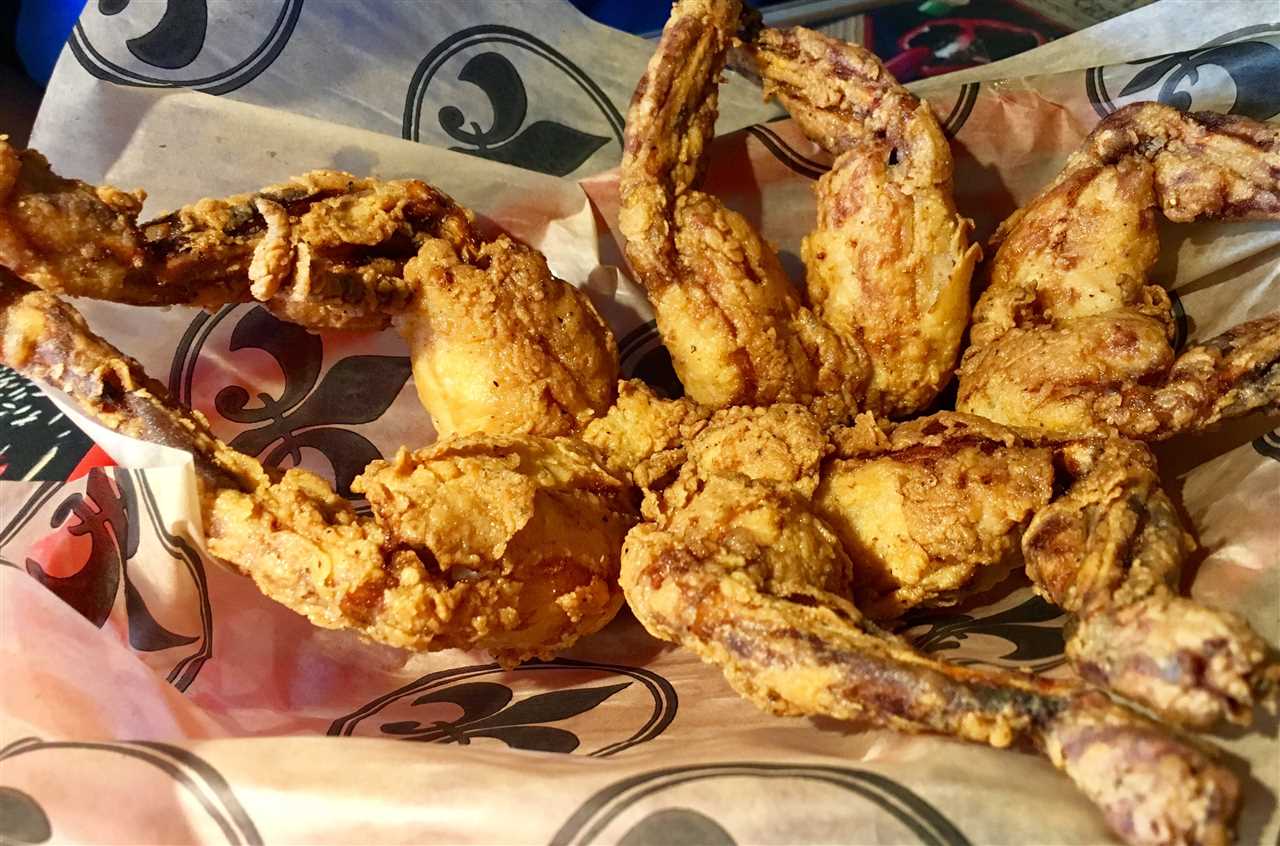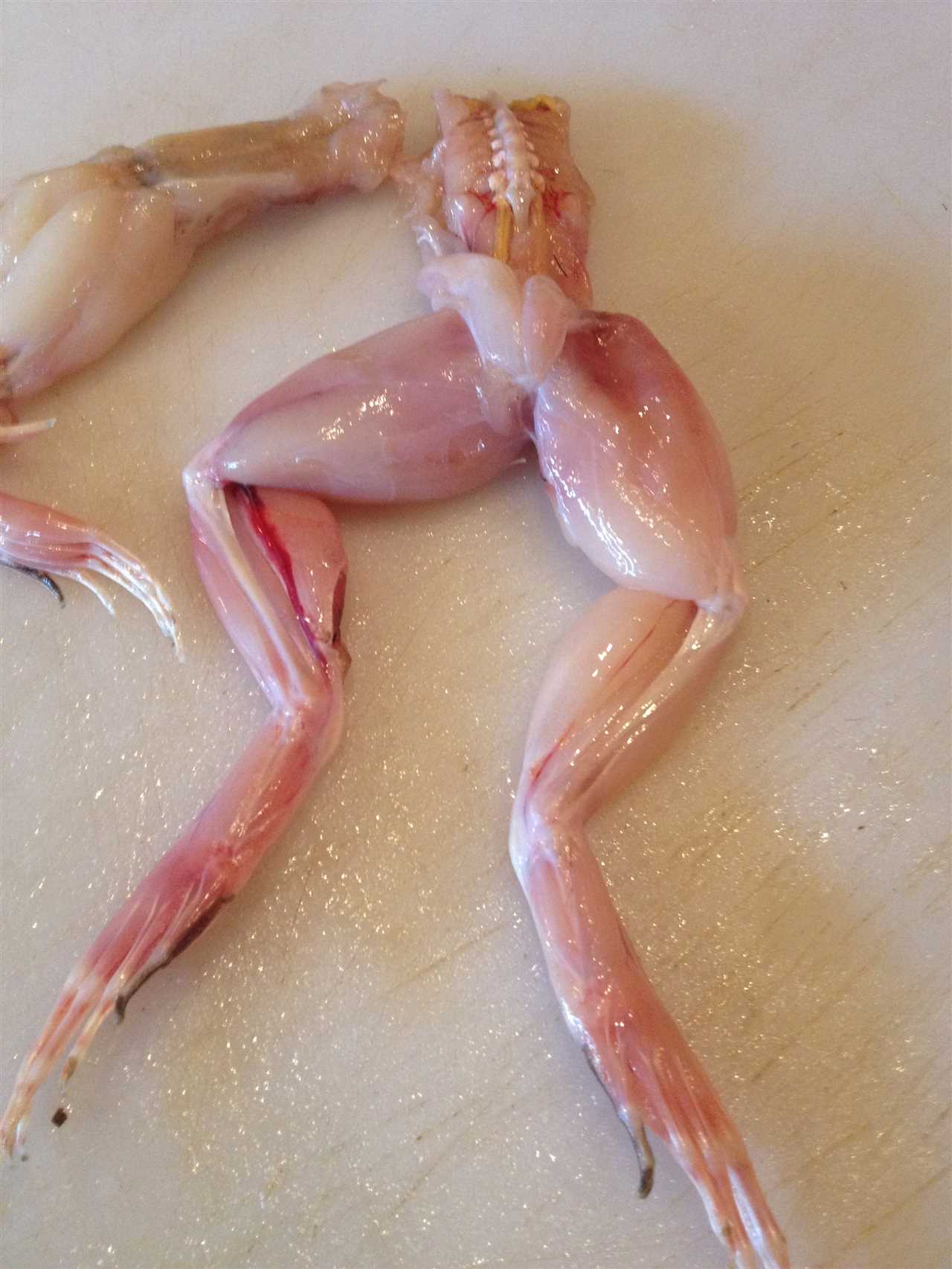
Have you ever wondered what frog legs taste like? Frog legs are a delicacy in many parts of the world, especially in France and China. These slim, elongated limbs of a frog have a unique taste that is often compared to chicken or fish.
When cooked, frog legs have a tender and delicate texture. The meat is white and flaky, with a slightly sweet and mild flavor. Some people describe it as tasting like a cross between chicken and fish, with a hint of earthiness.
So, if you are an adventurous eater and willing to try something new, why not give frog legs a chance? You might be pleasantly surprised by their unique taste and texture!
Frog legs, a unique and intriguing ingredient, have been a part of various cuisines around the world for centuries. Depending on who you ask, you may get varying opinions about the taste and flavor of frog legs. Some describe it as a delicate and slightly sweet flavor, while others compare it to chicken or fish.
The Taste of Frog Legs
The taste of frog legs can be best described as a combination of chicken and fish with a hint of sweetness. The meat is tender, succulent, and has a delicate texture that melts in your mouth. Its flavor is often influenced by the cooking method and seasoning used.
Frog legs are considered a delicacy in many culinary traditions and are highly sought after by adventurous food enthusiasts. They are particularly popular in French and Chinese cuisines, where they are prepared in various ways to highlight their unique taste.
The Texture of Frog Legs
The texture of frog legs is one of the most intriguing aspects of this ingredient. When cooked properly, the meat is tender and moist, with a firm yet delicate texture that is similar to chicken or fish. The legs have a slight chewiness that adds to the overall eating experience.
Due to their unique texture and flavor, frog legs are often considered a gourmet ingredient and are served in upscale restaurants around the world. Their versatility in different cooking methods allows chefs to create a wide range of dishes that showcase their taste and texture.
The Texture and Flavor Profile of Frog Legs
The flavor of frog legs can vary depending on how they are prepared. When simply boiled or steamed, frog legs have a mild and slightly earthy taste. However, when seasoned and cooked with herbs, spices, and sauces, they can take on a more complex and savory flavor profile.
The texture of frog legs is often compared to that of seafood, particularly delicate fish or shellfish. The meat is lean and tender, with a slight chewiness that adds to its overall appeal. Frog legs have a smooth and succulent texture that is both satisfying and enjoyable to eat.
One of the reasons why frog legs are considered a delicacy in many cuisines is their unique texture and flavor. They provide a different culinary experience that is both exotic and delightful. Whether they are grilled, fried, or braised, frog legs offer a satisfying bite that is sure to please even the most discerning palates.
Table:

| Texture | Flavor | Culinary Experience |
|---|---|---|
| Tender and delicate | Mild and slightly earthy | Exotic and satisfying |
| Firm bite | Complex and savory with seasoning | Delightful and enjoyable |
| Lean and succulent | Comparable to seafood | Unique and different |
Cooking Methods for Frog Legs
Pan-Frying
Pan-frying is a common method used to cook frog legs. It involves coating the legs in a seasoned batter or breading and then frying them in a pan with oil or butter. This method results in crispy, golden-brown frog legs with a tender and juicy interior. The breading or batter adds an extra layer of flavor and texture to the dish.
Grilling
Grilling is another popular way to cook frog legs. It imparts a smoky flavor and adds a slightly charred exterior to the legs. To grill frog legs, they can be marinated in a mixture of herbs, garlic, and lemon juice to enhance their taste. They are then placed on a preheated grill and cooked until they are tender and cooked through.
Baking
Baking is a healthier alternative to frying and grilling frog legs. It involves placing the legs in a baking dish and cooking them in the oven until they are tender and cooked through. Baking allows the legs to retain their natural flavor while keeping them moist and juicy. They can be seasoned with herbs, spices, and butter before baking to enhance their taste.
Steaming
Steaming is a gentle cooking method that helps to preserve the delicate flavor and texture of frog legs. To steam frog legs, they are placed in a steamer basket or a bamboo steamer and cooked over boiling water until they are tender and cooked through. Steaming keeps the legs moist and results in a light and tender dish.
Traditional and Modern Frog Leg Recipes

Here are a few traditional frog leg recipes that highlight the unique taste and texture of this culinary delicacy:
| Recipe | Description |
|---|---|
| Frog Legs Provencal | This French-inspired dish features frog legs cooked in a flavorful blend of butter, garlic, herbs, and white wine. The result is a dish that is both aromatic and delicious. |
| Fried Frog Legs | A classic Southern dish, fried frog legs are seasoned with a mix of spices, dipped in buttermilk, and coated in a crispy batter before being deep-fried to perfection. They are often served with a side of dipping sauce for added flavor. |
| Frog Leg Porridge | In Asian cuisine, frog legs are often used in soups and porridges. This comforting dish combines frog legs with rice, ginger, and other ingredients to create a hearty and nutritious meal. |
If you’re looking to experiment with more modern frog leg recipes, there are plenty of innovative options to try. Some popular examples include:
- Frog Leg Skewers: Skewered frog legs are marinated in a flavorful blend of spices and grilled to create a unique and tasty appetizer or main dish.
Whether you prefer traditional or modern recipes, frog legs offer a unique taste and texture that is sure to impress. So why not give them a try and discover the delicious flavors that this exotic ingredient has to offer?
Health Benefits and Nutritional Value of Frog Legs

Frog legs are not only a delicacy and a treat for adventurous eaters, but they also offer numerous health benefits and are a rich source of nutrients.
Apart from protein, frog legs are also a good source of vitamins and minerals. They are particularly rich in vitamins A and B, as well as potassium and phosphorus. These vitamins and minerals are important for maintaining good eyesight, promoting healthy skin, supporting nerve function, and maintaining strong bones and teeth.
Additionally, frog legs are low in calories and fat, making them a healthy choice for those watching their weight or following a low-fat diet. They are also cholesterol-free, which can be beneficial for heart health.
Nutritional Value of Frog Legs (per 100g serving)
- Calories: 73
- Protein: 16g
- Fat: 0.3g
- Carbohydrates: 0g
- Cholesterol: 43mg
- Vitamin A: 3% of the daily recommended intake
- Vitamin B12: 15% of the daily recommended intake
- Potassium: 307mg
- Phosphorus: 77mg
Exploring Cultural Significance of Frog Legs
Frog legs have been consumed in various cultures around the world for centuries. They hold a significant cultural importance in many regions and are considered a delicacy in some countries. Let’s take a closer look at the cultural significance of frog legs.
France
China

In Chinese cuisine, frog legs are highly valued for their delicate flavor and tender texture. They are commonly used in stir-fries, soups, and stews. Frog legs are believed to have medicinal properties in Traditional Chinese Medicine and are used to treat various ailments, including respiratory problems and fatigue.
United States
In the United States, frog legs have a unique cultural significance, particularly in the Southern states. They are a staple in Cajun and Creole cooking, where they are often breaded and fried. Frog gigging, the act of hunting for frogs, is a popular recreational activity in the Southern regions.
Overall, the cultural significance of frog legs extends far beyond their taste and texture. They represent culinary traditions, regional specialties, and cultural heritage in various parts of the world. Whether enjoyed as a delicacy, an exotic treat, or for their perceived health benefits, frog legs continue to be a fascinating and diverse aspect of global cuisine.

I’m Lena Adams—a product of an unconventional upbringing in the African wilderness. My father, a daring explorer of African wildlife, sparked my fascination with reptiles, a passion that intertwined with the tragic loss of my mother during an expedition, leaving an indelible mark on my life. Driven to understand the creatures that captivated my parents, I embarked on my journey, sharing insights about reptiles, frogs, and lizards on my website. Through my explorations and conservation efforts, I honour my family’s legacy while seeking connections—to the creatures, nature, and the mother whose presence I yearn to understand.
